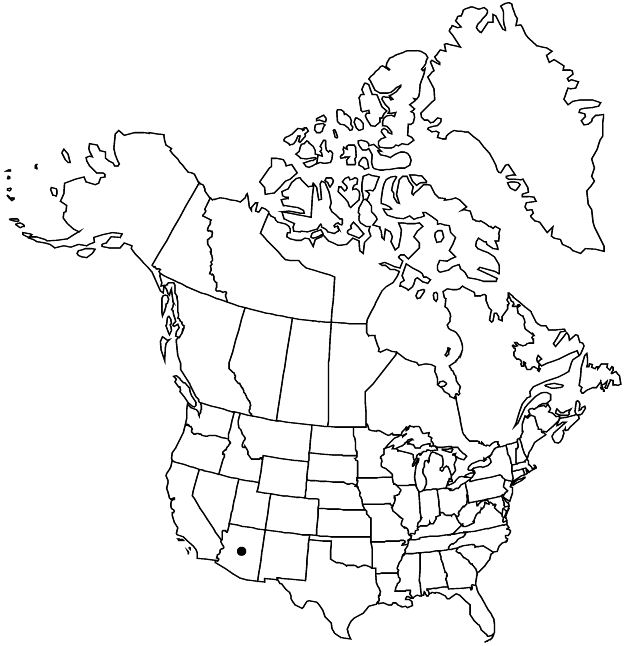Potentilla subviscosa var. ramulosa
J. Wash. Acad. Sci. 29: 481. 1939.
Stems (0.2–)0.4–1.5(–2) dm. Basal leaves not notably seasonally dimorphic, 2–7(–15 in late-season) cm; petiole 1–5(–11 in late-season) cm, long hairs 2–3(–4) mm (abundant all seasons); central leaflets obovate-cuneate to lanceolate, 1–2.5(–5 in late-season) cm, ± evenly incised 1/4–1/2 to midvein, teeth 2–4(–6 in late-season) per side. Flowers: sepals (2.5–)3.5–5(–6) mm; petals 3–5(–8) mm. Achenes 1.5–2 mm, lightly rugose, with small scar.
Phenology: Flowering Apr–Aug.
Habitat: Open conifer woodlands, edges of decomposing granite outcrops
Elevation: 1800–2700 m
Discussion
Variety ramulosa is the primary representative of sect. Subviscosae in the Rincon and Santa Catalina ranges in Pima County (the only other being Potentilla albiflora). Comparable plants have been collected on Aztec Peak in the Sierra Ancha of Gila County, where they overlap the range of and possibly intergrade with var. subviscosa. Intermediates also occur in the nearby Mazatzal Range and Fort Apache Indian Reservation. Historic collections of var. ramulosa exist from the Chiricahua, Huachuca, and Santa Rita ranges in Cochise and Santa Cruz counties, apparently from lower elevations than the known populations of P. rhyolitica.
Selected References
None.
